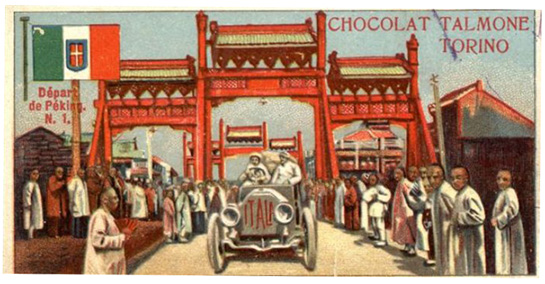
Talmone was a chocolate maker who also founded a pastry restaurant in Turin. This is an ad for his products with a colorful look at the start of the 1907 Peking to Paris race.
By Pete Vack
Color photos by Mario Marchesini
The multi talented Ceirano brothers, Giovan, Giovanni, and Matteo virtually gave birth to the Italian auto industry. The three, apart and together, were responsible for the ingenious Welleyes, (which were the basis of the first Fiats) the SCAT, the Ceirano, and the subject of interest herein, the Itala.
The youngest brother, Matteo was working for the Ceirano company when he decided to create a brand of his own. In 1904 he began the construction of a series of high end competition machines from a new location on Via Guastalla in Turin. In general, they were four cylinder T heads with side valves and large displacements. Some had shaft drive instead of the more common chain drive. He called the new car the “Itala” and had immediate success. In 1905 the Itala with a drive shaft became the first large car to win a major race, the 1905 Coppa Florio, and Cagno’s racing version won the 1906 Targa Florio. Matteo Ceirano left Itala in 1906 to form another company, S.P.A. ( an S.P.A. would win the 1909 Targa Florio) and left Itala with a new chief designer, Alberto Ballacco.
Ballacco prepared a special Itala for Prince Scipione Borghese’s entry in the 8000 mile Peking to Paris raid (race, rally) in 1907. A 40 hp car…all seven liters…was equipped with a 60 gallon gas tank, stiffer springs, a reinforced chassis and improved wheels.
Borghese was the first to enter the event, which would eventually include five cars; the Itala, two De Dion Boutons, a three wheeled single cylinder Contal, and a Dutch Spyker. The epic story has been told many times; suffice to say here that Borghese, (1871-1927) with his Budrio born mechanic Ettore Guizzardi (1881-1963) and correspondent for the Corriere della Sera, Luigi Barzini (1874-1947; if he name sounds too familiar, it is because he is the father of Luigi Barzini Jr, who in 1964, wrote “The Italians” ) persevered with great tenacity and accompanied by a huge bankroll won the event in the Itala.
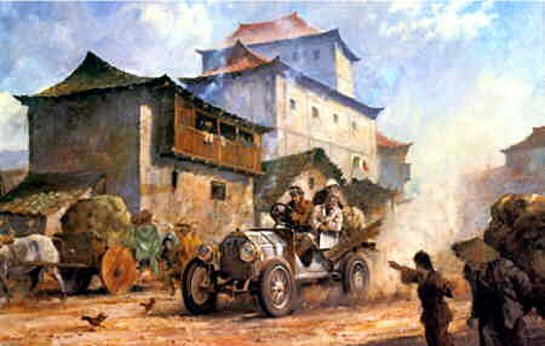
Another postcard depicting the Itala in China or Mongolia. But according to Philip Young, the Itala was painted red for the 1907 race: the color was changed to grey only after the event and it has been grey ever since. Hence, this painting was not done in 1907, but after the car had changed colors.
Barzini wrote a book about the experience, and helped make both the event and the car part of automotive history. The event, created by the French newspaper “Le Matin”, was as significant as the Wright’s brothers flight, the sinking of the Titanic, or Lindberg’s solo flight across the Atlantic. The winners became the darlings of the press and were justly treated as heroes in Europe. The Itala was, for a while, the most famous car in the world.
Most amazing of all was that four of the five cars finished; the Contal was left in the Gobi, where it remains, but the others made it to Paris. The totally original Spyker is in the Dutch National Automobile Museum (where is ours!) and the Itala, after being restored by Fiat, is in the Turin Motor Museum.
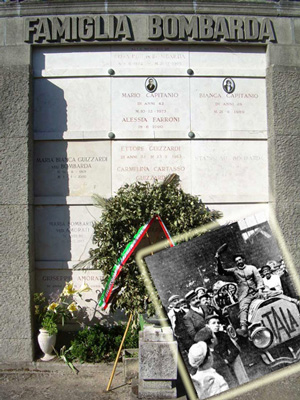
A wreath near the tomb of Ettore Guizzardi; Inset, Guizzardi celebrates after arriving in Paris. Color photo copyright Mario Marchesini.
A Celebration in Budrio
In 2007, to celebrate the 100th anniversary of the event, the Turin Museum brought out the Itala and it was photographed in Guizzardi’s hometown of Budrio by VeloceToday correspondent Mario Marchesini. The event was also timed to draw attention to the 2007 Peking to Paris rally. (The PtoP revival event began in 1997 a the 90 year celebration, again in 2007 and finally, in 2010.) We will also present a short feature about David Ayre’s Itala with participated in the 2007 event, the 2010 run and last year the Via Flaminia.
The celebration in Budrio was promoted by the Associazione Nazionale Autieri d’Italia, a local club that promotes military transportation functions. (“Autieri” means military drivers.) The event served as a memorial to native son Guizzadari, who so cherished the Itala that “in the intervals of polishing, greasing and testing his beloved Itala, he would lie quietly underneath her, contemplating her piece by piece for hours on end.” 1
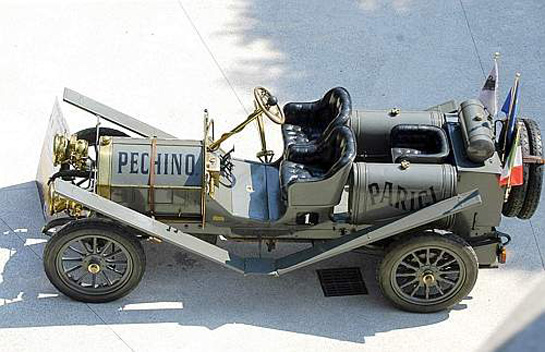
Completely open to the elements, Borghese, Guizzardi and Barzini took sixty days to complete the race. Note absence of advertizing! Photo Copyright Mario Marchesini.
Guizzardi also was a military driver during WWI. Although not explicit stated, automotive events such as the Peking to Paris were of interest to the military, who realized that the next war would be highly mechanized; a lot could be learned from the trials of Prince Borghese and Guizzardi. In a book written for the event, “Un Autiere alla Pechino Parigi”, Guizzardi, Nuvolari and Ferruccio Lamborghini were also featured as they would both serve as military drivers while in the army. 2 Wreaths and flowers were place on his tomb and displays of the route of the 1907 race were close by.
Footnote 1 Italian Racing Red, Karl Ludvigsen, Ian Allan, 2008
Footnote 2 Un Autiere alla Pechino Parigi, Prandi, 2007
Photo Gallery Copyright Mario Marchesini
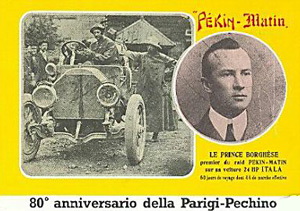
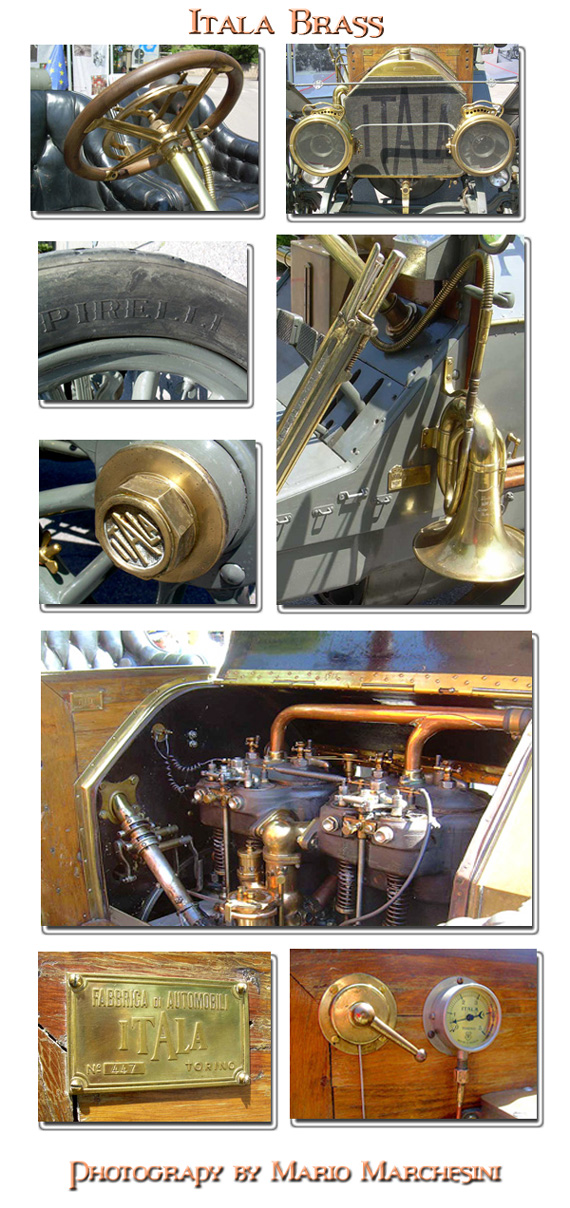
I have a 1926 spider ITALA Lancefield coachwork. Any information about my car?
Luca